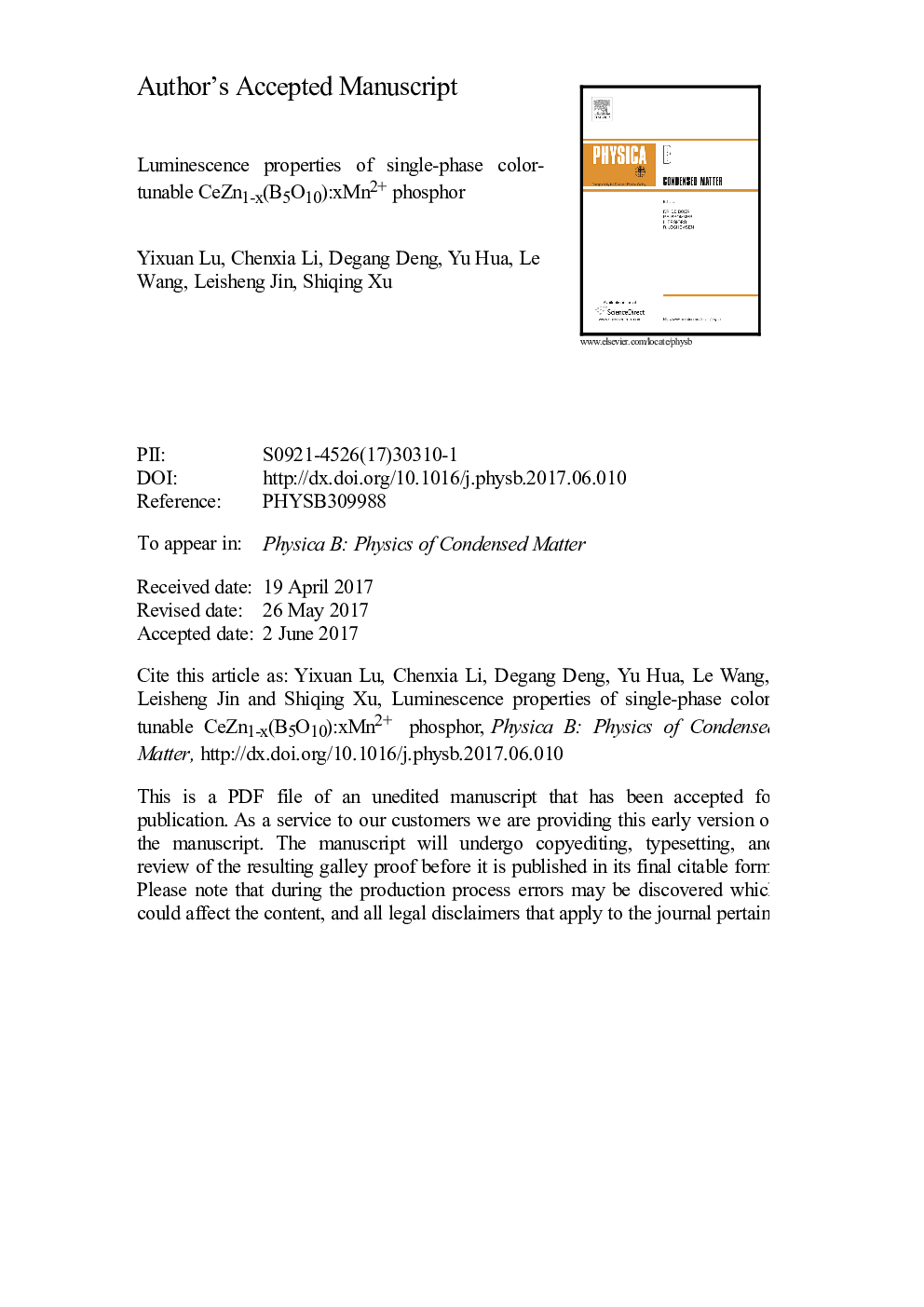| Article ID | Journal | Published Year | Pages | File Type |
|---|---|---|---|---|
| 5491694 | Physica B: Condensed Matter | 2017 | 25 Pages |
Abstract
In this work, a transition metal doped Ce3+-based borate CeZn1âx(B5O10):Mn2+ was synthesized by utilizing conventional solid-state reaction method. The lattice structure and particularly the luminescence properties of the synthesized phosphors were carefully studied. By analyzing the results, it is revealed that Mn2+ only occupies Zn sites, and it only contributes the light emitting peaked at 615Â nm under the excitation of 371Â nm. While the emitting peak at 437Â nm under the same excitation is verified to be caused by the 5d-4f (2F5/2 and 2F7/2) transitions of Ce3+-based. Furthermore, by conducting a comprehensive investigation on overlap of emission, excitation spectra and variation of fluorescence decay lifetimes, we make it clear that the energy transfer from Ce3+ to Mn2+ is virtually via a resonance-type mechanism. Last but not the least, we can realize color-tunable light emitting by adjusting the concentration of Mn2+ in our proposed phosphor and using excitation of ultraviolet (UV) light. In addition, close to white light can be realized when doping the Mn2+ ions to a certain extent.
Keywords
Related Topics
Physical Sciences and Engineering
Physics and Astronomy
Condensed Matter Physics
Authors
Yixuan Lu, Chenxia Li, Degang Deng, Yu Hua, Le Wang, Leisheng Jin, Shiqing Xu,
